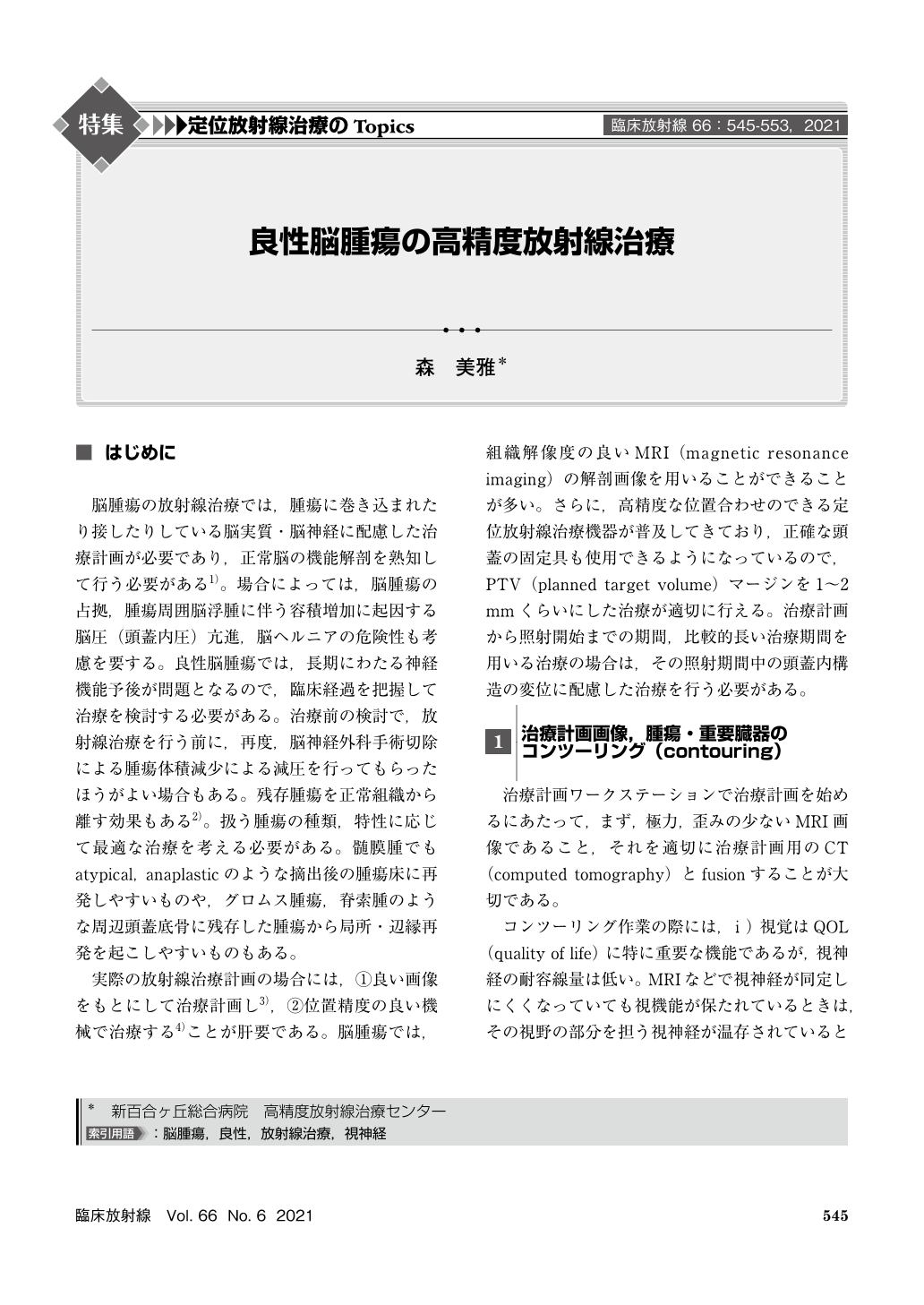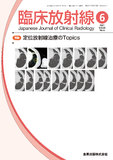Japanese
English
- 有料閲覧
- Abstract 文献概要
- 1ページ目 Look Inside
- 参考文献 Reference
脳腫瘍の放射線治療では,腫瘍に巻き込まれたり接したりしている脳実質・脳神経に配慮した治療計画が必要であり,正常脳の機能解剖を熟知して行う必要がある1)。場合によっては,脳腫瘍の占拠,腫瘍周囲脳浮腫に伴う容積増加に起因する脳圧(頭蓋内圧)亢進,脳ヘルニアの危険性も考慮を要する。良性脳腫瘍では,長期にわたる神経機能予後が問題となるので,臨床経過を把握して治療を検討する必要がある。治療前の検討で,放射線治療を行う前に,再度,脳神経外科手術切除による腫瘍体積減少による減圧を行ってもらったほうがよい場合もある。残存腫瘍を正常組織から離す効果もある2)。扱う腫瘍の種類,特性に応じて最適な治療を考える必要がある。髄膜腫でもatypical,anaplasticのような摘出後の腫瘍床に再発しやすいものや,グロムス腫瘍,脊索腫のような周辺頭蓋底骨に残存した腫瘍から局所・辺縁再発を起こしやすいものもある。
The role of stereotactic radiosurgery(SRS)/stereotactic radiotherapy(SRT)for benign brain tumors was summarized. In view of radiation oncology, low tolerance of optic pathways is one of the most concerning points, especially in dose planning for the tumors in or around the tuberculum sella, including pituitary adenoma, craniopharyngioma, meningioma, cavernous hemangioma. Reported results of SRS/SRT for pituitary adenomas, craniopharyngioma were summarized. SRS/SRT is a gold standard treatment option for small acoustic tumors. Effectiveness of SRS/SRT for central neurocytoma and paraganglioma(Glomus tumor)has been reported in the literature. Hemangioblastoma is relatively radio-resistant, but SRS/SRT would be efficient if the tumor is very small. It is also reported that SRS/SRT might be effective for recurrent or residual localized chordomas after surgical resection.

Copyright © 2021, KANEHARA SHUPPAN Co.LTD. All rights reserved.


